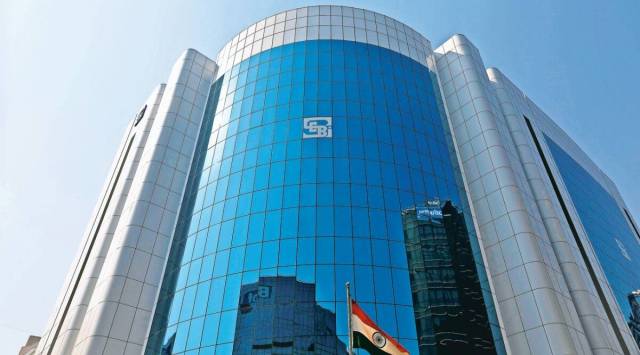- India
- International
Sebi unveils new framework for ETFs, index funds
The regulator also allowed mutual funds to launch passively managed equity-linked savings schemes.
 In addition, the committee comprises top level officials of infrastructure investment trusts (InvITs), real estate investment trusts (REITs), finance as well as legal experts and representatives of Sebi. (File)
In addition, the committee comprises top level officials of infrastructure investment trusts (InvITs), real estate investment trusts (REITs), finance as well as legal experts and representatives of Sebi. (File)The Securities and Exchange Board of India (Sebi) announced a new framework for managing passive funds — exchange traded funds (ETFs) and index funds — amid growing popularity of such funds as an investment product for retail investors.
It has also allowed mutual funds to launch passively managed equity-linked savings schemes (ELSS) to save taxes under Section 80C of the Income-tax Act.
Buy Now | Our best subscription plan now has a special price
Under the framework, Sebi has laid down norms for debt ETFs and index funds, its constitution, market making framework for ETFs, investor education and awareness charges, disclosure guidelines and other provisions.
The total assets under management (AUM) of index funds, ETFs and fund of funds investing overseas were Rs 5.27 lakh crore as of this April.

The regulator said the norms for debt ETFs or index funds could be based on indices comprising corporate debt securities or government securities (G-sec), T-bills and/or state development loans (SDLs) or a combination of corporate debt securities and G-secs, T-bills and SDLs. The new framework will come into effect from July 1 and will be applicable to all existing ETFs and index funds, it added.
For an index with at least 80 per cent weight of corporate debt securities, a single issuer should not have more than 15 per cent weight in the index in respect of AAA securities, not more than 12.5 per cent in case of AA securities and not more than 10 per cent in case of A and below rated securities, it said.
In case of a hybrid index — comprising both corporate debt securities and G-sec /SDL — with up to 80 per cent weight of corporate debt securities, a single issuer should not have more than 15 per cent weight in the index in respect of AAA-rated securities. However, for AAA-rated securities of PSUs and AAA-rated securities of PFI (public financial institution) issuers the limit will be 15 per cent.
Further, for AA-rated securities, a single issuer should not have more than 8 per cent weight in the index and not more than 6 per cent in respect of A and below rated securities. “For an index based on G-Sec and SDLs, single issuer limit shall not be applicable,” Sebi said, adding such an index should not have more than 25 per cent weight in a particular group, excluding securities issued by public sector undertakings (PSUs), public financial institutions (PFIs) and public sector banks (PSBs).
With regard to norms for market making framework for ETFs, the markets watchdog said asset management companies (AMCs) need to appoint at least two market makers (MMs), who are members of the stock exchanges, for ETFs to provide continuous liquidity on the exchange platform. Such MMs need to transact with AMCs only in multiples of creation unit size.
The AMCs are required to have an approved policy regarding market making in ETFs based on the framework for market making as provided by the regulator. Also, they need to facilitate in-kind creation and redemption of units of ETFs, including debt ETFs, by MMs on a best effort basis.
Further, Sebi said investors can directly approach the AMC for redemption of units of ETFs, for transactions of up to Rs 25 crore without any exit load, in case of certain scenarios.
It also said that the minimum subscription amount at the time of new fund offer (NFO) for debt ETFs/index funds and other ETFs/index funds will be Rs 10 crore and Rs 5 crore, respectively.
Meanwhile, the regulator said that mutual funds can have either an actively-managed ELSS scheme or a passively-managed one, but not in both categories.
The passive ELSS scheme should be based on one of the indices comprising equity shares from top 250 companies in terms of market capitalisation, Sebi said in a circular. The move will allow new fund houses that are especially focusing on passive schemes to float a passively-managed ELSS fund.
A Working Group was constituted with representation from various stakeholders in the passive funds domain like AMCs, mutual fund trustees and stock brokers. The recommendations of the group and the feedback received from the industry were deliberated in the Mutual Funds Advisory Committee and after considering the recommendations of the committee, Sebi came out with the new framework on the passive funds.
Best of Express

May 05: Latest News
- 01
- 02
- 03
- 04
- 05




































